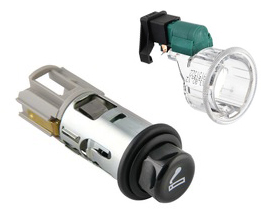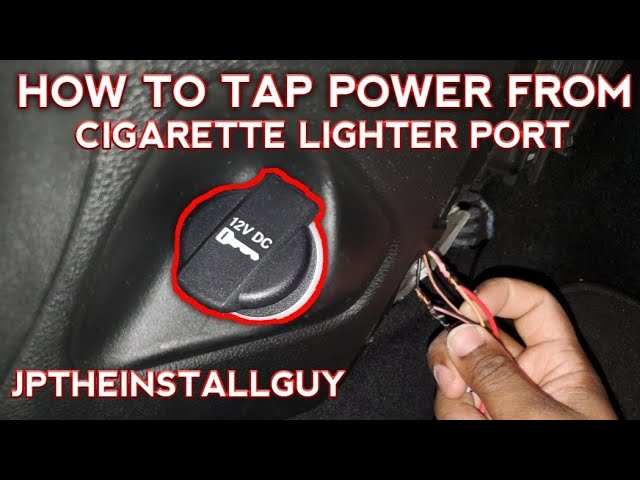To tap power from a cigarette lighter, insert a compatible adapter into the socket. Ensure your device’s power requirements match the output.
Tapping power from a vehicle’s cigarette lighter is a convenient way to charge devices on the go. Car owners often use this 12-volt socket to power phones, GPS units, or cameras. Despite its name, the cigarette lighter socket serves a broader purpose in contemporary vehicles.
It’s not just for lighting cigarettes; it’s a versatile power outlet that accommodates various accessories. Understanding how to properly use this power source is key for any driver. Safe utilization ensures your devices charge without risk to your vehicle’s electrical system. This knowledge becomes particularly useful during long road trips or for those who rely on electronic devices for both navigation and entertainment. Always check the compatibility of your charger and never exceed the socket’s power limitations to avoid damage or safety hazards.
Understanding The Cigarette Lighter Power Source
The cigarette lighter power source in vehicles is a versatile outlet, commonly serving dual roles: powering electronic devices and lighting cigarettes. Traditionally providing 12V DC power, this outlet has evolved into a reliable energy source for various accessories. To safely harness its potential, a clear understanding of the voltage output is essential.
Meticulous identification of safety considerations is paramount before interfacing with the cigarette lighter socket. The design of the socket limits the power it can safely deliver, commonly up to around 10 amps. Exceeding this limit can result in blown fuses or more severe electrical complications. Always consult the vehicle’s manual or an expert to ensure compatibility and prevent potential hazards.
Necessary Equipment For Tapping Into Cigarette Lighter Power
Selecting the right wire gauge is crucial for the safety and efficiency of the power draw from your car’s cigarette lighter. Utilize a wire that can handle the amperage of your devices to prevent overheating or damage. Usually, a 16 to 20 gauge wire will suffice for most applications.
Connecting the fuse is a safety imperative step. Insert an inline fuse close to the power source to protect against surges. This fuse should match the amperage of the devices you intend to power, ensuring that it blows before any damage occurs to your car’s electrical system or the devices plugged in.
- Wire stripper to remove insulation
- Crimping tool to secure wire connections
- Soldering iron, if soldering is preferred over crimping
- Heat shrink tubing or electrical tape to insulate exposed wires
- Voltmeter to test connections
Assessing Power Requirements
Understanding the power needs for specific devices is fundamental before tapping into a car’s cigarette lighter for power. Devices vary widely in their power consumption, so it’s important to check the device’s specifications for its voltage and current requirements, usually detailed in the user manual or on the device’s label.
Calculating the power draw involves a simple mathematical formula: Power (Watts) = Voltage (Volts) x Current (Amperes). For instance, if a device operates at 12 volts and draws 1.5 amperes, its power consumption is 18 watts. Most car cigarette lighters are capable of providing up to 10A of current, equivalent to approximately 120W at 12V. Always ensure the device’s power needs do not exceed the lighter’s power output capacity to avoid safety hazards or damage.

Credit: www.suncoastparts.com
Identifying Suitable Power Tapping Methods
Direct wiring methods provide a reliable way to access power from a vehicle’s cigarette lighter. To implement this, you’ll need a set of basic tools and some technical knowledge. First, disconnect the battery to ensure safety. Next, locate the cigarette lighter’s positive and negative wires, and solder or crimp connectors onto the wires of the device you wish to power. Ensure a firm connection and then reconnect the battery to test the setup.
Alternatively, using a power inverter is a convenient way to convert 12 volts DC to 110 volts AC, thereby allowing the use of standard electronics in a vehicle. Choose an inverter with the appropriate wattage for your device, plug it into the cigarette lighter socket, and connect your device to the inverter’s AC outlet.
For a temporary solution, employing a portable jump starter equipped with a power outlet can be effective. These devices are typically used to jump-start a car but can also be used to supply power to small devices. They are portable, rechargeable, and are useful in emergencies when the vehicle’s battery is inaccessible or dead.
Detailed Steps For Direct Wiring Method
Identifying the ideal spot for direct wiring via a cigarette lighter entails locating an area that allows for ease of access, yet is away from any moving components or heat sources. Most vehicles have a cigarette lighter socket conveniently placed within the dashboard or center console, making this an optimal point for drawing power.
Once the location is determined, it’s crucial to ensure a solid connection to the power source. This involves attaching a line directly to the positive terminal of the vehicle’s battery or the cigarette lighter wiring. Employing a fuse tap or add-a-circuit can be beneficial for a secure connection, safeguarding against potential electrical issues.
In the final step, the connection must be properly insulated and stabilized to prevent electrical shorts or disconnections. Zip ties or electrical tape can be utilized to fasten any loose wires, ensuring longevity and reliability of the power tap.
Using A Power Inverter
Choosing the appropriate power inverter is crucial for safe and efficient operation. Determine the wattage of the devices you plan to power with your car’s cigarette lighter. Factor in a buffer of at least 20% above the rated power needs of your devices. Select an inverter with the correct wattage to match your requirements, ensuring it is also compatible with the cigarette lighter’s voltage output.
Connecting the inverter directly to the cigarette lighter socket involves plugging the inverter’s adapter into the socket. Ensure your car ignition is switched to the accessory position to activate the power from the lighter. Avoid overloading the cigarette lighter by plugging in devices that together pull more current than it can handle, as this could blow a fuse.
Upon connection, verifying the functionality of your setup is essential. Power up the inverter, then connect a small device, like a phone charger, to test the output. Check the inverter’s indicator lights or display to ensure it is properly converting DC power to AC, and your device is receiving charge. This step confirms the system is ready for more substantial use.
Frequently Asked Questions On How To Tap Power From Cigarette Lighter
Can I Use My Cigarette Lighter As A Power Outlet?
Yes, you can use your car’s cigarette lighter as a power outlet for charging devices, provided you have a compatible adapter. Always check your vehicle’s specifications for power capacity before use.
How Do You Test A Cigarette Lighter For Power?
To test a cigarette lighter for power, use a test light or multimeter. Ground the device, probe the lighter socket center, and check for a voltage reading or illuminated test light.
How To Convert Car Cigarette Lighter To Usb?
Purchase a car charger adapter that fits into the cigarette lighter socket. Plug the adapter in, and connect your USB cable to the charger’s USB port.
How Much Power Can You Get From A Cigarette Lighter?
A car cigarette lighter socket typically provides up to 10-15 amps of power, which translates to about 120-180 watts at a 12-volt DC supply.
Conclusion
Harnessing your vehicle’s cigarette lighter for power is simpler than you might expect. With the right adapter and a cautious approach, you can charge devices on the go. Remember: safety is paramount, so follow guidelines strictly. Embrace the convenience, but respect the limits of your car’s electrical system.
Drive smart, stay powered.


